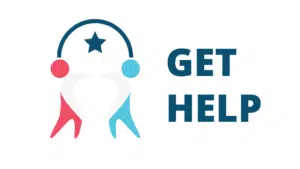Understanding Teen Anxiety Disorders: A Comprehensive Guide for Parents
At least 20 to 30 percent of U.S. teens will struggle with one or more anxiety disorders during their adolescence. Phobias, social anxiety, separation anxiety, and generalized anxiety account for most teen anxiety disorders.
Although the average age of onset of anxiety symptoms is 11 years old, different types of anxiety disorders tend to affect certain age groups. For example, social anxiety is seen more in 13 to 15-year-olds, while generalized anxiety and phobias are diagnosed primarily in older teens.
Certain risk factors have been identified that increase the chance of an adolescent developing an anxiety disorder. Exposure to severe stress and trauma, childhood neglect or abuse, and growing up in a dysfunctional household are leading risk factors for adolescent anxiety disorders.
In addition, anxiety in teens is often co-morbid with other psychiatric disorders, especially depression, ADHD, obsessive-compulsive disorder (OCD), and bipolar disorder.
Types of Teen Anxiety Disorders
Separation Anxiety Disorder
Teens suffering from separation anxiety disorder are afraid to leave their parents because they think something bad will happen if they don’t remain near or with that parent.
Infants and toddlers experience separation anxiety as part of their normal development. Most outgrow separation anxiety before they are four years old. When a teen has a separation anxiety disorder, it may be due to past trauma, such as the loss of one parent, losing one parent in a divorce, or being abandoned at a young age.
Generalized Anxiety Disorder (GAD)
The stereotype of the “worry-wart” could be used to describe a teen or an adult with GAD. They worry uncontrollably about everything–from whether gray clouds mean a tornado is forming to the sound of a siren, meaning a family member has died in a car accident.
Teens with GAD often worry about failing every test they take, anticipate a disaster happening at any school event, and invent scenarios in which family members suffer harm if they attend a sports game or concert.
Factors involved in the development of adolescent GAD include genetics, neurotransmitter imbalance, personality traits (low self-esteem, perfectionism), and coping with a chronic disease such as diabetes or psoriasis.
Social Anxiety Disorder
Teens with social anxiety disorder are intensely concerned about being judged, embarrassed, or demeaned in social situations. They will do anything to avoid attending school events, participating in school activities, or speaking in class. Forcing a teen with social anxiety disorder to take part in a social event may cause them to “meltdown.”
They may cry, scream, throw things, and threaten to run away when confronted with the possibility of interacting with strangers or people they don’t know. The origin of social anxiety disorder is usually a combination of genetics, personality traits, learned behavior, and previously experiencing embarrassment in front of others.
Phobias/Panic Disorder
Panic attacks often arise from an extreme fear of someone or something. For example, teens with agoraphobia are terrified of leaving their homes because they believe they will be harmed or die. Teens with acrophobia are afraid of heights and may refuse to ride in an airplane or climb a rope in gym class.
Some teens suffer from monophobia–the fear of being alone–and will do anything to avoid being alone. The cause of panic disorder and phobias in teens and adults is not known. Still, research indicates stress, genetics, neurotransmitters, and having an overly sensitive temperament may contribute to the development of panic disorder.
Obsessive-Compulsive Disorder (OCD)
Characterized by persistent thoughts (obsessions) and the overwhelming compulsion to act on these thoughts, OCD in teens frequently involves repetitive hand-washing, counting objects, or checking and re-checking the condition of things. These “rituals” must be done by a teen with OCD, or they will experience severe, almost crippling anxiety.
For adolescents with OCD, rituals like counting how many utensils are in a drawer over and over again or washing their hands for exactly 10 minutes and then repeating the ritual are necessary to prevent something catastrophic from occurring to themselves and others.
Post-Traumatic Stress Disorder (PTSD)
PTSD most often impacts teens who have been neglected, abused, abandoned, or otherwise suffered a traumatic event in their lives. Teens who have lost their homes to earthquakes, floods, or tornadoes can experience PTSD.
Witnessing violence in the home but not being a part of the violence can cause PTSD. One of the more serious teen anxiety disorders, PTSD can lead to teens becoming addicted to drugs and alcohol as a way to self-medicate and suppress flashbacks and intrusive thoughts about the trauma.
Selective Mutism
The least common adolescent anxiety disorder is called selective mutism. Almost always diagnosed in childhood, selective mutism in teens is characterized by their inability to speak in social situations involving strangers, authority figures, or people they consider intimidating.
They usually avoid eye contact, have no expression, appear frozen physically, and resist responding when spoken to. Causes of selective mutism are believed to be genetics, temperament (being excessively inhibited and shy), environmental factors, and possibly learned behavior.

Early Warning Signs of Anxiety in Teens
Recognizing teen anxiety symptoms that do not fall under normal teen worries and moodiness is critical for starting professional treatment before symptoms worsen. Behaviors to watch for in teens who may be struggling with the onset of an anxiety disorder include:
- Noticeable changes in sleeping and eating habits
- Academic issues when none previously existed
- An unusual reluctance to attend school
- Increased irritability, moodiness, and sensitivity
- Verbalizing fears, worries, or negative expectations that seem unfounded or irrational
- Avoiding activities they used to enjoy (sports, hanging out with friends, going to school functions)
- Adopting compulsive behaviors resembling OCD rituals
- Zoning out when someone is talking to them, appearing unable to concentrate or focus on anything
- Using drugs or alcohol, hanging out with a different crowd of friends
Adolescent anxiety disorders can manifest physically as well as mentally and emotionally. When teens complain about one or more of the following, always take them to their primary care physician for a check-up. Your doctor can then determine if the symptoms are due to a physical cause or a mental cause:
- Palpitations/shortness of breath/racing heart/chest pain
- Dizziness
- Nausea/abdominal pain/vomiting
- Chronic headaches
- Unexplained weight loss or weight gain
- Hearing problems/sensitivity to sound
- Vision problems/sensitivity to light
- Skin irritations/eczema/hives/rash
- Joint and muscle pain/body aches
When a teen is in a constant state of anxiety, the body prepares to “survive” by initiating a host of physiological and hormonal changes. These changes cause the heart to beat faster, breathing becomes more rapid, and muscles remain stiff and tense.
Activation of the sympathetic nervous system leads to higher, sustained levels of cortisol and adrenaline in the body. Anxiety disorders may lead to something called somatic symptom amplification, which makes teens hypervigilant about physical sensations. Consequently, the teen may interpret a fast-beating heart as a heart attack or dizziness as something wrong with their brain.
Parenting Anxious Teens: Managing Teen Anxiety With Love and Support
Anxiety therapies for teenagers, such as cognitive behavioral therapy, exposure therapy for teens with phobias, and medication management with therapy, are effective treatments that can be continued into adulthood, if necessary. Parents can provide adolescent anxiety support by:
- Educating themselves about anxiety disorders to better understand why their teen thinks and behaves the way they do. Gaining knowledge about teen anxiety will also help them empathize and communicate better with their child.
- Actively listening to their teen talk about their anxiety by staying nonjudgmental, maintaining eye contact, and showing appropriate concern for their problems.
- Encouraging their teen to eat healthier foods, get enough sleep, and spend time outside the house either walking, bicycling, or doing physical activities they enjoy.
- Respecting their teen’s limits to what makes them feel anxious. Never nag or force a teen with an anxiety disorder to do something that would overwhelm them.
- Providing unconditional love and support at all times. Letting teens know that no matter how long it takes for them to reach a point where they feel they can manage their anxiety, you will always be there to support and empower them.
How Parenting Coaches Can Help Parents Manage Adolescent Anxiety Disorders
Parenting anxious teens can be bewildering and even somewhat intimidating. Most parents want to do all they can to help their teen by seeking the assistance of a parenting coach.
Parenting coaches specialize in guiding and advising parents on managing and improving their child’s anxiety disorder. Initially, the parenting coach will assess the situation as a whole–family dynamics, parenting styles, the specific anxiety disorder affecting the teen–and begin teaching parents how to actively listen, how to express themselves clearly and sympathetically with their teen, and what kind of expectations and boundaries they should set for the teen.
Parenting coaches will also instruct parents on how to introduce anxiety coping strategies to their child that are specific to the anxiety disorder.
When necessary, parenting coaches may refer parents to other resources such as family therapists, psychiatrists, or educational counselors if the teen’s anxiety is complicated by underlying issues like ADHD or learning disabilities.
If you are interested in learning more about parenting coaches, please visit this contact page today for immediate assistance.












